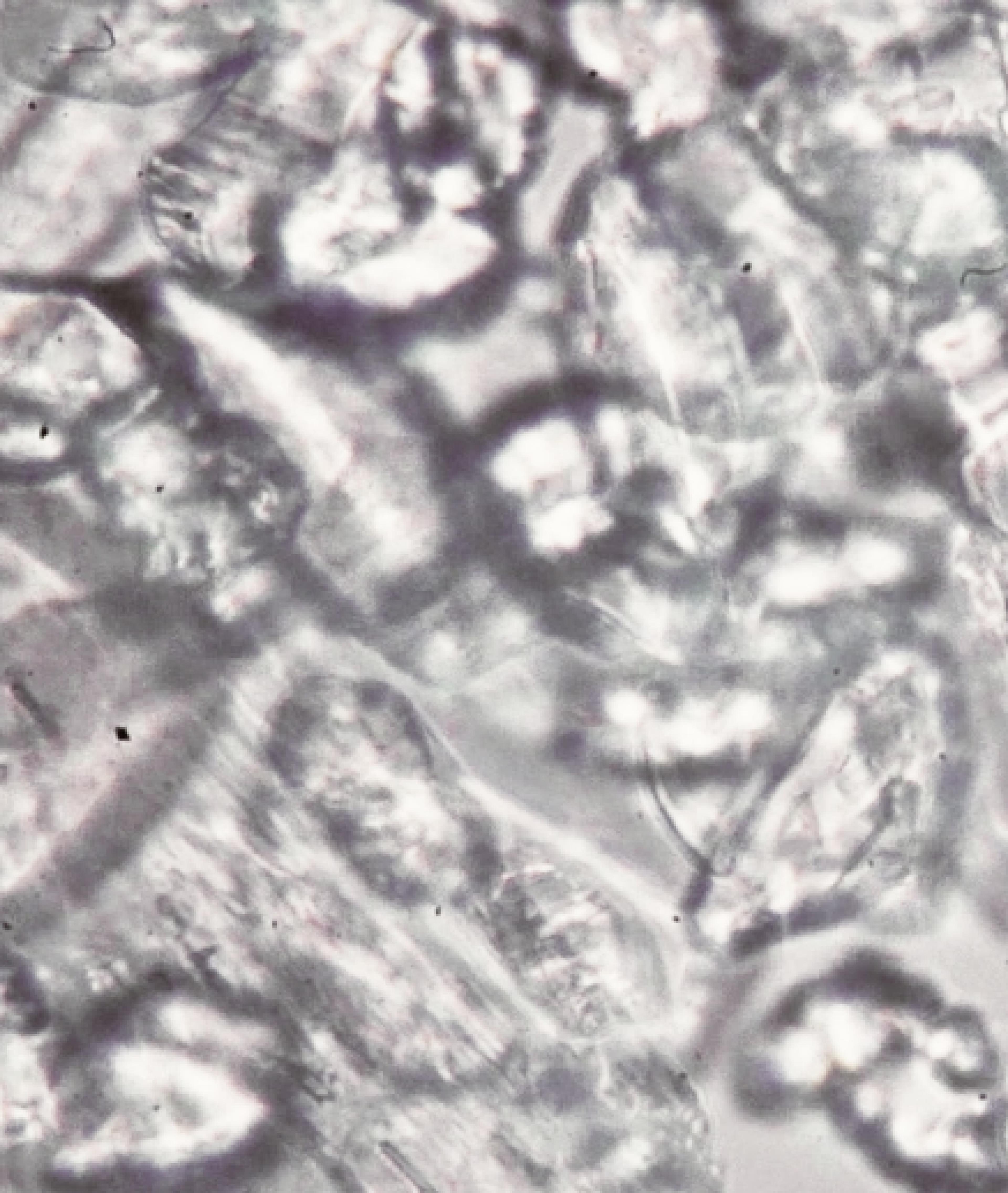Sensitive vs. sensitized
- Ance
- Eczema
- Skin microbiome

Why care: Sensitive skin is very common. On average, about 70% of people worldwide report that they experience some form of sensitivity, but there could be another culprit in the works - your skin could be sensitized instead. Here we discuss skin sensitivity in-depth, exploring the root causes, pathology, and remedies. We also discuss how to tell if your skin is sensitive or sensitized.
IF you have ever experienced skin redness, patchiness, itching, burning, flaking or some combination of these from products or substances that should NOT burn (i.e., water, repair creams, hydrating serums), there is no doubt- you could have truly sensitive skin. However, there is another condition to consider when deciding how to identify and treat these symptoms. Rather than being sensitive, your skin could actually be sensitized. Although these two are often used interchangeably, there are some interesting, nuanced differences that, if identified correctly, can make all the difference in treatment.
Sensitive skin
: sensitive skin was defined as "A condition defined by the occurrence of unpleasant sensations (stinging, burning, pain, pruritus, and tingling sensations) in response to stimuli that normally should not provoke such sensations.”
- PMID: 26939643
Sensitive skin is not a skin type, it is a skin condition. Most often, a person with sensitive skin begins to experience this sensitivity as a child. And although sensitive skin is highly manageable, it cannot typically be cured. Sensitivity triggered by hormonal or environmental changes can also occur. For instance, menopausal women tend to experience more sensitivity at this stage of life, even if they did not previously have sensitive skin, due to hormonal changes. Other interesting factors that can contribute to skin sensitivity include gender, immunity/ immune function, pigmentation, climate, and air/water pollution levels. Common skin diseases associated with sensitive skin are Eczema and Rosacea, which are both rooted in inflammation.
A study published in NCBI took a deeper look at sensitive skin through the lens of two important pathways: physiological and psychological. It seems that identification of skin sensitivity contains both of these. When looking at physiological effects, researchers found a decreased amount of lipids, resulting in a thinner, weaker epidermis. They also found that the skin barrier of individuals with sensitive skin is more easily disrupted than the barrier of those that do not have sensitive skin.
Psychological factors also play a role in reported sensitivity. Because a big part of skin sensitivity has to do with feeling itching, burning, stinging, etc., it makes sense that there is evidence of neurosensory dysfunction in people with skin sensitivity. A study looked at objective signs of sensitivity (redness, irritation, etc.) vs the reported amount of sensitivity to a product. There was a noticeable discrepancy. In other words, although there are no physical/observable signs of sensitivity, feelings of stinging, burning, itching, and tingling were all still reported by participants.
The study concludes “the variety of sensory manifestations that sensitive skin patients report, combined with the scarcity of objective signs, would seem strongly to indicate the presence of neurosensory defects in sensitive skin, presumed to be related to acceleration of nerve response and therefore low sensitivity threshold.” Possible explanations could be nerve density or central nervous system dysfunction.
Sensitized skin
: skin's lipid barrier or outermost layer of skin has been weakened over time.
Sensitized skin is a state that the skin can enter into; so, this is not a condition you are born with, but something that is developed over time. Like sensitive skin, sensitized skin can be caused by a variety of reasons, but they are a little easier to pin down and, most importantly, they are able to be stopped, making skin sensitization easily curable. Some of the reasons skin becomes sensitized are:
- Skin overload: High actives, over-cleansing, over-exfoliating. These practices weaken the skin barrier and strip the skin of essential nutrients, oil, and protection that it needs to counter this irritation. When skin is overloaded, nothing is getting absorbed, and everything is making the skin red and inflamed.
- Product triggers: Retinol (or any vitamin A derivative), vitamin C serum (low pH has been known to cause irritation), and high % acids (Glycolic, Salicylic, Lactic, etc.). Even actives that are not typically known to cause irritation like hyaluronic acid, sodium hyaluronate, and niacinamide can cause skin to become sensitized if the product is too concentrated. Lastly, certain preservatives, dyes, and fragrances.
- Aging: This is similar to skin overload, however, there is a different function at play. Older skin loses collagen overtime. Collagen helps to absorb much of the ‘blow’ from high active ingredients. Therefore, with the lack of collagen, older individuals will likely experience more irritation from using fewer active products or lower concentrations than they would when they were younger.
- Weather: Exposure to harsh weather conditions for a short period of time (think excessive cold while skiing, etc.) will prompt skin to become sensitized. This is different from climate because climate is a fairly steady environment that the skin has ‘grown up in’, while weather is a harsh, sudden change for a short period of time.
As a general rule, if you had good or regular skin as a child and you started becoming irritated once you discovered what ‘actives’ were, there’s a good chance your skin is sensitized.
How to have resilient skin:
The key to improve either one of these conditions is to improve your skin’s resilience. Having resilient skin means the skin will be able to adapt to external triggers without flaring up physically or causing discomfort. In order to achieve true resilience, there are two main areas of focus: the skin barrier and the skin microbiome.
In both sensitive and sensitized skin conditions, the skin barrier is disrupted. As mentioned before there is a lack of lipids in the barrier, allowing for triggers to easily make their way into the epidermis and dermis- inviting inflammation and leaving sensitive nerves in the skin exposed. A compromised skin barrier can be improved via products that focus on repair, while also using skin identical lipid ingredients like squalane, ceramides, and cholesterol, which are all found in skin in a variety of forms.
Try SIV’s Spore Based Biome Balancing Serum with Squalane and Bacillus spores.
Another compromised area in both sensitive and sensitized skin is the skin microbiome. When skin is overreacting to external triggers, this is an indication that there is something wrong in the skin microbiome. The skin microbiome controls the skin’s immune system- which is what is causing these reactions in the first place. When the skin’s immune system senses a threat, it reacts, causing symptoms like redness, inflammation, irritation, and itching. Products that include truly probiotic, prebiotic, and postbiotic elements can be helpful in improving the skin microbiome.
Try SIV’s Spore Based Biome Balancing Serum with active Bacillus spores.
Interesting work with postbiotics is being done on sensitive skin as well. A study published in NCBI looked at the effects of using Bifidobacterium Longum Lysate (postbiotic) on sensitive-skinned volunteers in a double-blind, placebo-controlled study. The result was a significant decrease in sensitivity among the group who received the cream with the postbiotic as compared to the control, which did not contain the postbiotic, B. Longum Lysate.
In addition, using gentle ingredients and practices, outlined in skin routines that take a corneotheraputic approach are also great ways to improve the skin microbiome. Restoring the skin microbiome may be slightly more tricky than repairing the skin barrier, but the good news is- when one of these areas improves, the other does too.
*Pro tip for sensitized skin: Stop your regular regimen to figure out what exactly is causing the skin to become sensitized. After the skin has returned to a regular state (probably after 2-4 weeks), introduce products slowly, allowing for a full 2 weeks to pass before adding another product.
Bottom line:
Whether your skin is sensitive or sensitized, there are steps to be taken in order to regulate the irritation. Distinguishing between which of these irritations best describes your skin will help you make the most informed decision about what to do about irritation. As a general rule, thinking back to childhood should give a clearer picture of what condition your skin is truly in. Either way, if you’re experiencing irritation, focusing on repairing the skin microbiome and skin barrier in tandem will improve your skin’s tolerance level and resilience… and isn’t that what we’re really all after?
https://www.ncbi.nlm.nih.gov/pmc/articles/PMC6533878/
https://podcasts.apple.com/us/podcast/skincare-school/id1552975779
https://www.ncbi.nlm.nih.gov/pmc/articles/PMC5595600/
https://aedit.com/aedition/difference-between-sensitive-vs-sensitized-skin


